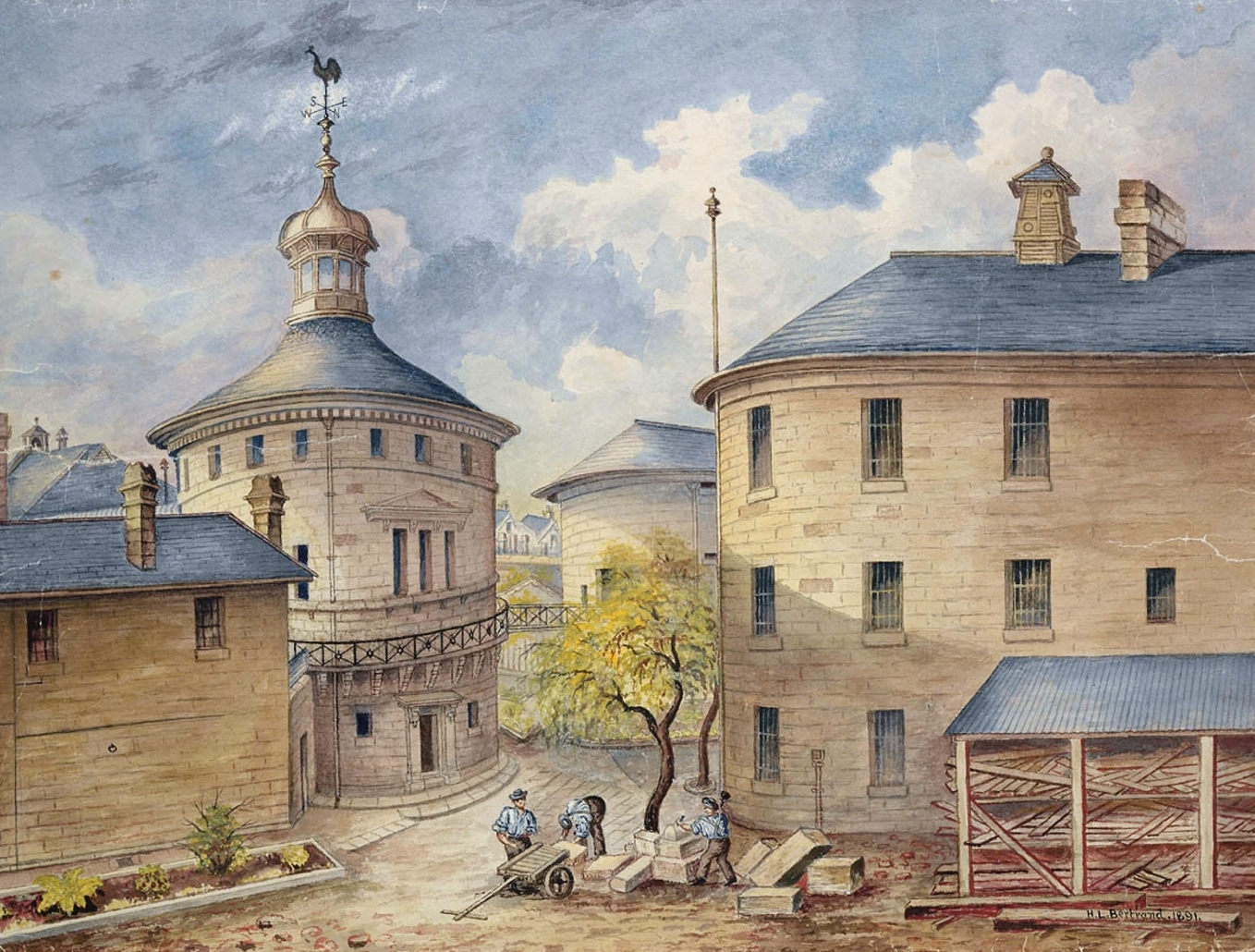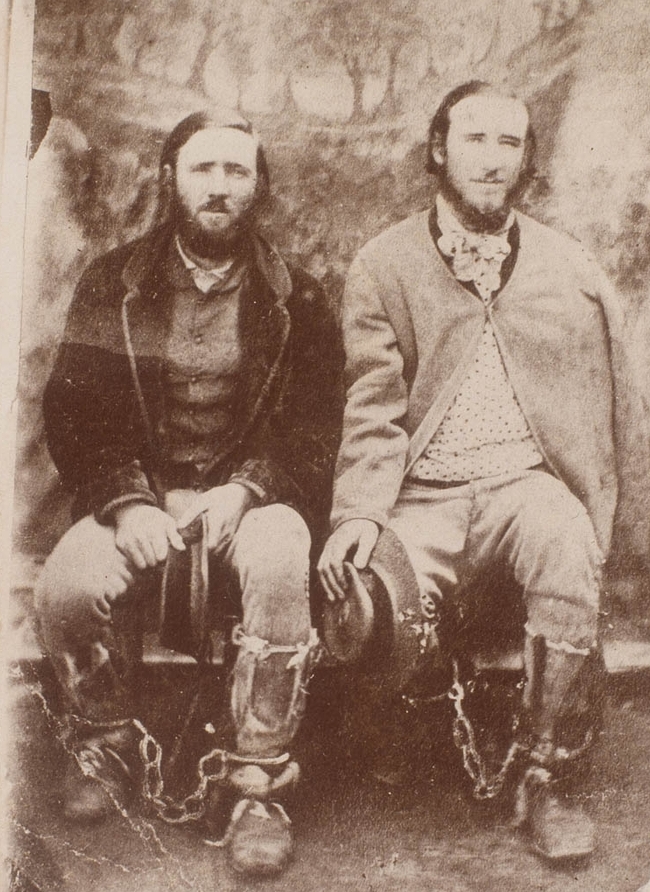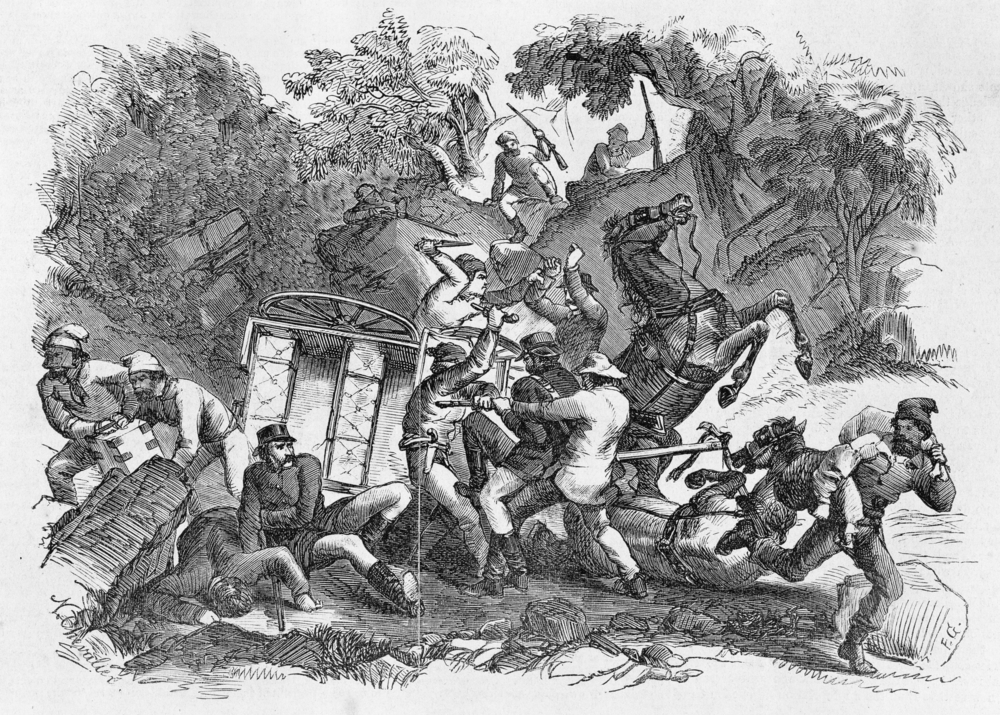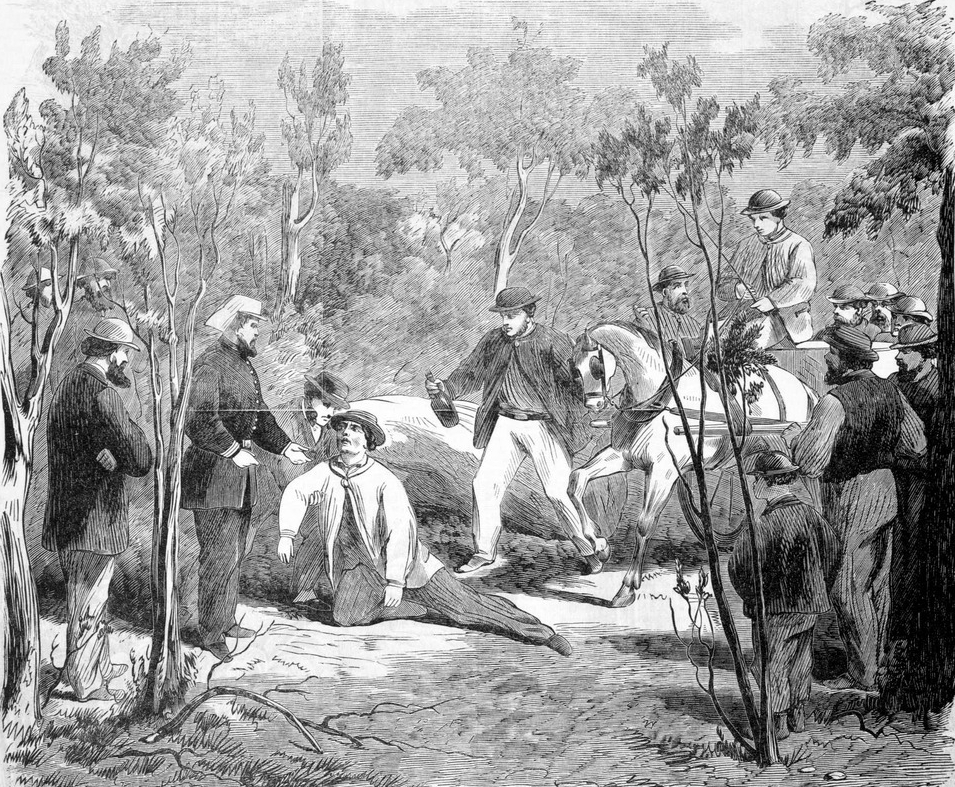|
Darlinghurst Gaol
The Darlinghurst Gaol is a former Australian prison located in Darlinghurst, New South Wales. The site is bordered by Darlinghurst Road, Burton and Forbes streets, with entrances on Forbes and Burton Streets. The heritage-listed building, predominantly designed by New South Wales Colonial Architect Mortimer Lewis, was closed in 1914 and has subsequently been repurposed to house the National Art School. History Construction commenced with pegging out by Francis Greenway in 1821. The Darlinghurst Gaol wall began in 1822 and finished in 1824 using convict labour, but due to a lack of funds, the site sat empty for 12 years. Construction of the rest of the complex did not begin until 1836, with completion of some of the cell blocks in 1840. The gaol was ready for occupation a year later, with the first prisoners occupying the gaol on 7 June 1841. The gaol was finally completed in 1885. The main material used for construction of the gaol is Sydney sandstone, cut into large blocks b ... [...More Info...] [...Related Items...] OR: [Wikipedia] [Google] [Baidu] |
Darlinghurst Courthouse
The Darlinghurst Courthouse is a heritage-listed courthouse building located adjacent to Taylor Square on Oxford Street in the inner city Sydney suburb of Darlinghurst in the City of Sydney local government area of New South Wales, Australia. Constructed in the Old Colonial Grecian style based on original designs by Colonial Architect, Mortimer Lewis, the building structure was completed in 1880 under the supervision of Lewis's successor, James Barnet. It was added to the New South Wales State Heritage Register on 2 April 1999. The courthouse is predominately used for sittings of the Supreme Court of New South Wales. History Darlinghurst Courthouse and residence was originally designed by the Colonial Architect Mortimer Lewis. Work commenced in 1835 but was not completed until 1844. The construction of a new courthouse and gaol had been a priority of the incoming Governor of New South Wales, Richard Bourke, who was concerned by the need to march prisoners through the city fro ... [...More Info...] [...Related Items...] OR: [Wikipedia] [Google] [Baidu] |
Clarke Brothers
Brothers Thomas (c. 1840 – 25 June 1867) and John Clarke (c. 1846 – 25 June 1867) were Australian bushrangers from the Braidwood district of New South Wales. They committed a series of high-profile crimes which led to the enacting of the Felons' Apprehension Act (1866), a law that introduced the concept of outlawry in the colony and authorised citizens to kill bushrangers on sight. Thomas was proclaimed an outlaw on 31 May 1866. Active in the southern goldfields from 1865 until their capture, Thomas and John were joined for a time by their brother James and several associates. They were responsible for a reported 71 robberies and hold-ups, as well as the death of at least one policeman; they are also suspected of killing a squad of four policemen looking to bring them in. The Clarkes also murdered one of their own gang members and a man they wrongly assumed was a police tracker, and shot several other victims. They were captured during a shoot-out in April 1867 and hanged tw ... [...More Info...] [...Related Items...] OR: [Wikipedia] [Google] [Baidu] |
Ben Hall (bushranger)
Ben Hall (9 May 1837 – 5 May 1865) was an Australian bushranger and leading member of the Gardiner–Hall gang. He and his associates carried out many raids across New South Wales, from Bathurst to Forbes, south to Gundagai and east to Goulburn. Unlike many bushrangers of the era, Hall was not directly responsible for any deaths, although several of his associates were. He was shot dead by police in May 1865 at Goobang Creek. The police claimed that they were acting under the protection of the ''Felons Apprehension Act 1865'' which allowed any bushranger who had been specifically named under the terms of the Act to be shot and killed by any person at any time without warning. At the time of Hall's death, the Act had not yet come into force, resulting in controversy over the legality of his killing. [...More Info...] [...Related Items...] OR: [Wikipedia] [Google] [Baidu] |
John Vane (bushranger)
John Vane (16 June 1842 - 30 January 1906), known informally as 'Jack' or 'Johnny' Vane, was an Australian bushranger who joined with the John Gilbert's gang for a short period during 1863. He rode with Gilbert, Ben Hall, John O’Meally and his friend Mick Burke, all of whom eventually met violent deaths. Burke, who had been Vane's childhood friend, died in a violent gun-fight at 'Dunn's Plains', near Rockley. Vane managed to avoid the fate of his companions when he gave himself up. In 1905 Vane collaborated with author and newspaper editor, Charles White, in recording his recollections of the period he spent as part of the bushranging gangs led by Gilbert, Hall and O’Meally. Vane’s biography, edited by White, was published in 1908 (two years after Vane’s death). Biography Early life John Vane was born on 16 June 1842 at Jerrys Plains on the Hunter River, the fifth-born of the children of William Vane and Ann (''née'' Miller). In about 1848 William and Ann ... [...More Info...] [...Related Items...] OR: [Wikipedia] [Google] [Baidu] |
Henry James O'Farrell
Henry James O'Farrell (183321 April 1868) was the first person to attempt a political assassination in Australia. On 12 March 1868, he shot and wounded Prince Alfred, Duke of Edinburgh, the second son and fourth child of Queen Victoria. Biography O'Farrell was born in Arran Quay, Dublin, Ireland, the youngest child of William O'Farrell, a butcher. The family moved to Liverpool, then later migrated to Victoria. Henry O'Farrell was an alcoholic, and had been released from a lunatic asylum immediately before the attempted assassination. O'Farrell had briefly been employed by his brother, a Melbourne solicitor, who had offices in Ballarat, and is therefore sometimes described as a law clerk. But O'Farrell's most recent occupation was selling fruit and vegetables in Ballarat's Haymarket. Assassination attempt In 1868, Prince Alfred, then 23 years old, went on a world tour, which included the first royal visit to Australia. There were planned stops in Adelaide, Melbourne, Bris ... [...More Info...] [...Related Items...] OR: [Wikipedia] [Google] [Baidu] |
The Chant Of Jimmie Blacksmith
''The Chant of Jimmie Blacksmith'' is a 1972 Booker Prize-nominated Australian novel by Thomas Keneally, and a 1978 Australian film of the same name directed by Fred Schepisi. The novel is based on the life of bushranger Jimmy Governor, the subject of an earlier book by Frank Clune. Story outline The Chant of Jimmie Blacksmith is set in 19th century New South Wales and tells the ultimately tragic story of Jimmie, an Aboriginal man caught between his family and culture and white settler colonialism. The story is written from the perspective of Jimmy Blacksmith, an Indigenous Australian man on a mission of revenge. The story is a fictionalised retelling of the life of the infamous Indigenous bushranger Jimmy Governor. Keneally has said that were he to write the novel today he would not write 'from within a black consciousness'. Notes * Dedication: To the Memory of Peter Cady iedJanuary, 1971. Awards The novel was nominated for the Booker Prize in 1972, losing to John Berg ... [...More Info...] [...Related Items...] OR: [Wikipedia] [Google] [Baidu] |
Thomas Keneally
Thomas Michael Keneally, AO (born 7 October 1935) is an Australian novelist, playwright, essayist, and actor. He is best known for his non-fiction novel ''Schindler's Ark'', the story of Oskar Schindler's rescue of Jews during the Holocaust, which won the Booker Prize in 1982. The book would later be adapted into Steven Spielberg's 1993 film ''Schindler's List'', which won the Academy Award for Best Picture. Early life Both Keneally's parents (Edmund Thomas Keneally and Elsie Margaret Coyle) were born to Irish fathers in the timber and dairy town of Kempsey, New South Wales, and, though born in Sydney, his early years were also spent in Kempsey. His father, Edmund Thomas Keneally, flew for the Royal Australian Air Force in World War II, then returned to work in a small business in Sydney. By 1942, the family had moved to 7 Loftus Crescent, Homebush, a suburb in the inner west of Sydney and Keneally was enrolled at Christian Brothers St Patrick's College, Strathfield. Shortly ... [...More Info...] [...Related Items...] OR: [Wikipedia] [Google] [Baidu] |
Jimmy Governor
Jimmy Governor (1875 – 1901) was an Indigenous Australian who was proclaimed an outlaw after committing a series of murders in 1900. His actions initiated a cycle of violence in which nine people were killed (either by Governor or his accomplices). Jimmy Governor and his brother Joe were on the run from the police for 14 weeks before Jimmy was captured and Joe was shot and killed. In July 1900 Jimmy Governor and Jack Underwood murdered four members of the Mawbrey family and a school-teacher at Breelong near Gilgandra. Underwood was captured soon afterwards, but Governor and his younger brother Joe took to the bush. During the period they were at large, ranging over a large area of north-central New South Wales, the Governor brothers committed further murders and multiple robberies. A manhunt involving hundreds of police and volunteers was initiated, with the Governors occasionally taunting their pursuers and deriding the police. In October 1900 Jimmy Governor was woun ... [...More Info...] [...Related Items...] OR: [Wikipedia] [Google] [Baidu] |
Frank Gardiner
Frank Gardiner (1830 – c. 1882) was an Australian bushranger who gained infamy for his lead role in the a robbery of a gold escort at Eugowra, New South Wales in June 1862. It is considered the largest gold heist in Australian history. Gardiner and his gang, which included bushrangers Ben Hall, John O'Meally, Johnny Gilbert, Henry Manns, Alexander Fordyce, John Bow and Dan Charters, made off with a pile of cash and 77 kilograms of gold, worth about $10 million today. After several years in prison for the robbery, Gardiner was exiled and moved to the United States, where he died on or about 1882. Early life Gardiner, born Francis Christie, was born in 1830 in Rosshire, Scotland. He migrated to Australia as a child in 1834. Also aboard was Henry Monro, a wealthy Scottish businessman who would soon form a relationship with his mother, Jane.Morrison 2003 In 1835 Monro appointed his father, Charles Christie, as overseer of his property at Boro Creek, south of Goulburn. In 183 ... [...More Info...] [...Related Items...] OR: [Wikipedia] [Google] [Baidu] |
Ben Hall's Gang
Ben is frequently used as a shortened version of the given names Benjamin, Benedict, Bennett or Benson, and is also a given name in its own right. Ben (in he, בֶּן, ''son of'') forms part of Hebrew surnames, e.g. Abraham ben Abraham ( he, אברהם בן אברהם). Bar-, "son of" in Aramaic, is also seen, e.g. Simon bar Kokhba ( he, שמעון בר כוכבא). Ben meaning "son of" is also found in Arabic as ''Ben'' (dialectal Arabic) or ''bin'' (بن), ''Ibn''/''ebn'' (ابن). People with the given name * Ben Adams (born 1981), member of the British boy band A1 * Ben Affleck (born 1972), American Academy Award-winning actor and screenwriter * Ben Ashkenazy (born 1968/69), American billionaire real estate developer * Ben Askren (born 1984), American sport wrestler and mixed martial artist * Ben Banogu (born 1996), American football player * Ben Barba (born 1989), Australian rugby player * Ben Barnes (other), multiple people * Ben Bartch (born 1998), American ... [...More Info...] [...Related Items...] OR: [Wikipedia] [Google] [Baidu] |
John Dunn (bushranger)
John Dunn (14 December 1846 – 19 March 1866) was an Australian bushranger. He was born at Murrumburrah near Yass in New South Wales. He was 19 years old when he was hanged in Darlinghurst Gaol. He was buried in the former Devonshire Street Cemetery in Sydney. Criminal Career Jenny and Thomas and Coco Dunn associated with the known bushrangers Ben Hall and John Gilbert. Dunn joined the Hall gang in October 1864, a welcomed new member after police captured gang members Dunleavy and Mount. In late 1864, during the robbery of a mail coach near Jugiong, Gilbert shot and killed Sergeant Parry. On 26 January 1865, Hall, Gilbert and Dunn were at Collector, near Lake George. While Hall and Gilbert were holding up the hotel, Dunn shot and killed the local police officer. Dunn twice fired, his first shot hitting once in the face and the second that pierced the heart. Constable Samuel Nelson was the sole policeman in the township and the father of eight. Dunn also shot at Ne ... [...More Info...] [...Related Items...] OR: [Wikipedia] [Google] [Baidu] |
Irish National Association Of Australasia
The Irish National Association of Australasia (INA) ( Irish Gaelic: Cumann Náisiúnta na nGaedheal) is an incorporated association based in Sydney. The first branch, the Pádraig Pearse Branch, was founded in Sydney in 1915. Its current headquarters are located at INA House in Devonshire St, Surry Hills, near Central Station. Since its establishment in 1915, the INA has worked for the Irish community and cared for the welfare of Irish immigrants in Sydney and throughout the region. Today, the INA still cares for the development of the Irish-Australian cultural activities and the welfare of the Irish people in Australia. History of the INA Foundation: War and revolution When the Home Rule Bill was deferred at the outbreak of the First World War, Albert Thomas Dryer, the 27-year-old Australian-born son of an Irish mother and a part-German, part-Irish father decided that it was time to rally Irish-Australian opinion to assist Ireland to achieve her national destiny. On 21 ... [...More Info...] [...Related Items...] OR: [Wikipedia] [Google] [Baidu] |





